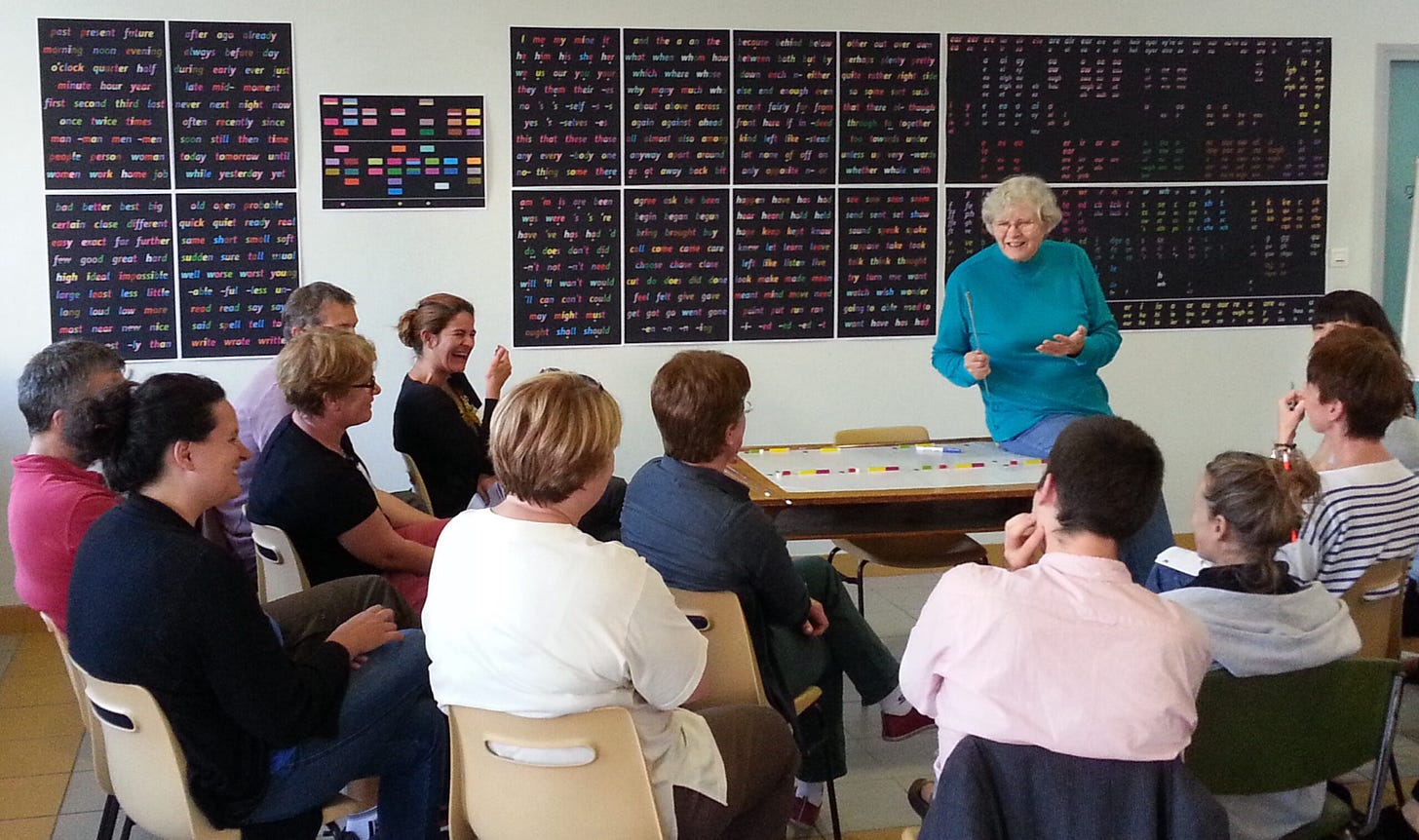This is #2 in the series “Methodology Madness,” in which I explore the various quirky language learning methods that have popped up over time. Click here for the first article on Suggestopedia.
But first, a quick announcement. I’ll be going on a short “summer break” to build a solid foundation for my second Substack newsletter, ZAN!. If you’re interested in receiving a newsletter full of cool things made by Asian creators, please consider checking it out & subscribing. Thanks! :)
If someone told me that they were learning a language “the silent way,” my first instinct would be that they’re just not saying anything. And a lot of people really do try to learn languages this way — by quietly reading, memorizing, translating, and DuoLingo-ing. (This is fine, of course, if your language learning goals do not include speaking.)
It’s not an unthinkable way to learn a language. After all, every human baby acquires their first language without saying a word for the first year or so of their life. So, maybe “the silent way” makes sense?
Well, surprise!
In this method hailing from the 1960s, the student isn’t the silent one. The teacher is!
Background
The Silent Way was introduced in 1963 by Egyptian mathematician Caleb Gattegno. In this method, the teacher is almost entirely silent, except for some short stimuli like words or phrases, plus gestures.
The onus is really on the students to uncover the rules and meanings hidden in the language. Learners are expected to be exceptionally autonomous as they actively participate in their language learning. Problem-solving and discovery are hallmarks to this method (as well as Gattegno’s overall approach to teaching and learning).
Silence, and colors!
In addition to silence, one key element of this method is the use of color and physical objects. This is used in particular for learning pronunciation. Students learn to associate specific sounds with certain colors or color combinations, and use colorful rods and charts to learn new words. (If you’re colorblind, this is NOT the method for you.)
Below is an example of how you might encounter new vocabulary words (and learn to pronounce them) —
Colors and visuals are integrated into a LOT of Silent Way activities. For example, here’s how colored rods can be used to explain syntax:
While all these colors initially seem fun and happy and helpful, this complex method has the potential to get overwhelming, real quick. Imagine being in a classroom surrounded by all the posters below! You’d have to catch on to the system fast — or risk getting left behind.
Is there any merit to this method?
While The Silent Way has largely fallen out of fashion, we can still draw from this method to gain useful tools and insights into language learning.
For one, I think color-coding can actually be quite useful. Using a highlighter to draw your attention to tricky sounds within words can help with learning pronunciation. But if you’re hyper-fixating on matching the exact sound to the correct color, you risk losing sight of the bigger picture.
I do love the fact that students are so autonomous and proactive when learning through this method. While some groups of students need more guidance and structure (such as small children), I love setting up scenarios for my students to learn linguistic rules implicitly.
For example, I might give my class a task without providing explicit language instruction (a more explicit prompt would be something like “use the past continuous to tell a story,” while a less explicit one would just be “tell a story”).
Some teachers might feel understandably apprehensive about letting their students loose like this (will they learn anything? Will they find the patterns?), but I’ve found that students can benefit greatly from this more hands-off approach. It’s not appropriate ALL the time, but I love seeing students get a confidence boost when they draw correct conclusions on their own!
What do you think?
If you’re a language learner, would you be comfortable taking a class where your teacher barely says a word? And what components of The Silent Way are you drawn to the most?
If you’re a teacher, do you see any benefit to the colorful system of The Silent Way? What role does student autonomy play in your teaching?
Thanks for reading! As I mentioned in the note above this article, I’ll be taking a bit of a summer break to focus on building a foundation for my second newsletter, called ZAN! — I’d appreciate it if you take a look & subscribe if the topic interests you!
See you soon,
Rebecca










Without reading your article, I was thinking about how ridiculous the silent way was and then I got to the part about how most people do it learning languages on apps and such 🤣 Guilty as charged.
Also, excited for your second newsletter. You had me at diaspora!
I learn languages like a parrot, mimicking everything I hear, even down to the tone, accent, facial expressions and even gestures! This method is not for me 😁